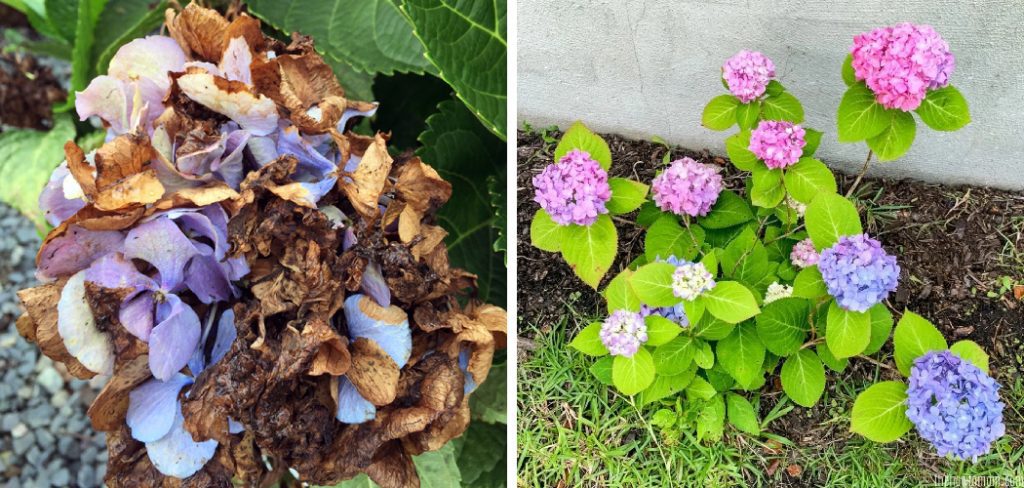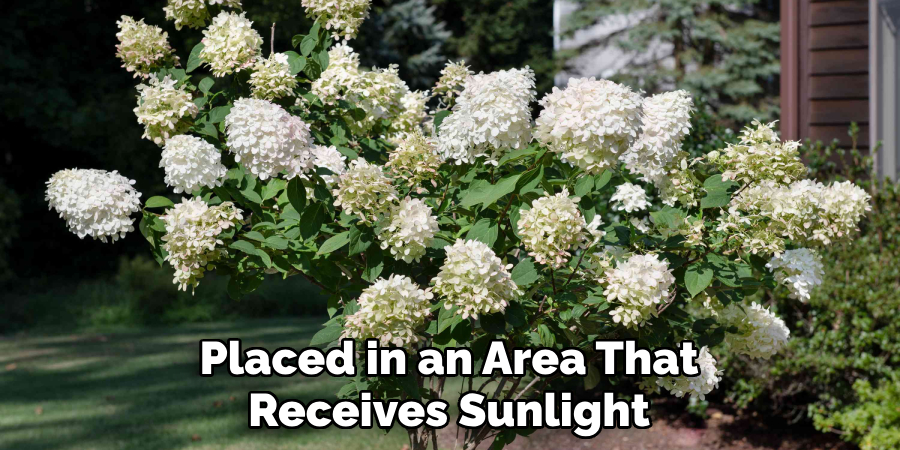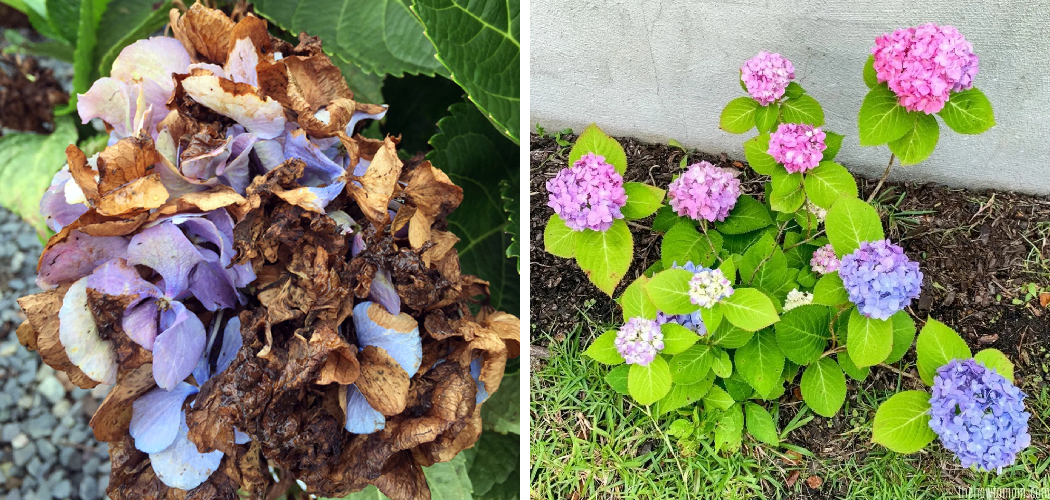To revive a dried out hydrangea plant, ensure it is placed in a cool, shaded area and water it thoroughly until the soil is moist. Here’s how to bring a dried out hydrangea plant back to life.
Whether your hydrangea has been neglected or has experienced a period of drought, a dried out plant can be revived with a few simple steps. By following these guidelines, you can restore your hydrangea to its healthy state and enjoy beautiful blooms once again.
Keep reading to discover the techniques for successfully reviving a dried out hydrangea plant.

How to Revive a Dried Out Hydrangea Plant: Step by Step Guide
Understanding The Causes Of Hydrangea Plant Drying Out
Understanding the causes of hydrangea plant drying out is crucial for reviving it. One common reason is a lack of water. Hydrangeas need regular watering to thrive. Another factor is excessive sun exposure, which can cause the plant to dry out quickly.
Providing shade or moving the plant to a more sheltered area can help combat this issue. Additionally, soil issues can contribute to the drying out of hydrangeas. The soil might not have enough organic matter or be poorly drained. Amending the soil with compost and ensuring proper drainage will promote healthy hydration.
By addressing these causes, you can revive a dried-out hydrangea plant and restore its beauty in your garden.
Assessing The Condition Of Your Dried Out Hydrangea Plant
Assessing the condition of your dried out hydrangea plant is crucial to revive it. Check the leaves and stems, looking for signs of wilting or discolored foliage. Examine the soil and roots to see if they are dry or overly wet.
Observe the overall plant appearance, noting any drooping or lack of new growth. It is important to provide adequate water to rehydrate the plant and restore its health. Ensure the soil is moist but not waterlogged, allowing proper drainage. Consider providing shade or relocating the plant to a cooler spot to prevent further stress.
Prune any dead or damaged branches to encourage new growth. With the right care and attention, your dried out hydrangea plant can bounce back and flourish once again.
Revive A Dried Out Hydrangea Plant
Reviving a dried out hydrangea plant requires careful steps to rehydrate the plant. Watering techniques play a vital role in providing the necessary moisture. Creating a misty environment helps in restoring hydration levels. It is essential to provide shade and protection to avoid excessive drying.
Relocating the plant to a suitable spot can also make a difference. Using shade cloth or an umbrella further shields the plant from direct sunlight. Improving soil moisture retention can be achieved through mulching techniques. Adding organic matter enhances water retention in the soil.
Assisting root recovery may involve pruning damaged roots. Applying root stimulants aids in the plant’s revival. Regular maintenance and care should be prioritized, including adjusting the watering schedule. Lastly, a well-planned fertilizing regimen ensures the plant’s long-term health.
Tips For Preventing Hydrangea Plant Drying Out
Reviving a dried out hydrangea plant requires a few key steps. First, establish a consistent watering routine to ensure the plant receives adequate hydration. Additionally, it’s essential to provide proper sun exposure, as hydrangeas thrive in bright but indirect light.
The soil should be well-draining and enriched with organic matter to maintain moisture. Adequate mulching around the plant’s base helps to retain moisture and protect the roots from extreme temperatures. By following these guidelines, you can prevent your hydrangea plant from drying out and promote its overall health and vitality.
With a little care and attention, your hydrangea can regain its vibrant beauty.
Troubleshooting Common Issues In Reviving A Dried Out Hydrangea Plant
Troubleshooting a dried out hydrangea involves identifying the common issues that could have caused its wilting. Overwatering is a significant risk, as it can lead to root rot. To address this, ensure proper drainage in the plant’s pot or garden bed.
Look for signs of stress or disease, such as yellowing or browning leaves or drooping stems. If detected, take immediate action to remedy the problem, like adjusting watering frequency or applying appropriate treatments. Assess the plant’s soil moisture levels regularly by inserting your finger about an inch into the soil.
If it feels dry, water the hydrangea thoroughly, but avoid saturating the soil. Reviving a dried out hydrangea requires patience, consistent care, and attention to its specific needs. By troubleshooting these common issues, you can successfully revive your wilted hydrangea plant and restore its vitality.
Frequently Asked Questions For How To Revive A Dried Out Hydrangea Plant
How Often Should I Water A Dried Out Hydrangea Plant?
To revive a dried out hydrangea plant, water it thoroughly until the soil is moist, but not soggy. Repeat this process every 2-3 days, allowing the top inch of soil to dry out between waterings. Adjust the frequency based on the plant’s response and environmental conditions.
How Much Sunlight Does A Dried Hydrangea Plant Need?
Dried hydrangea plants should be placed in an area that receives bright, indirect sunlight for at least 4-6 hours a day. Avoid exposing the plant to direct sunlight, as it can cause further stress and damage the foliage. A well-lit spot near a window or under a shade is ideal.

Can Pruning Help Revive A Dried Out Hydrangea Plant?
Yes, pruning can help revive a dried out hydrangea plant. Start by removing any dead or wilted foliage, as well as any crossed or damaged branches. Trim back the remaining healthy stems by one-third to stimulate new growth. Regular pruning, along with proper watering and care, can help the plant recover.
Conclusion
Reviving a dried out hydrangea plant can be a challenging but rewarding task. By following the steps outlined in this blog post, you can ensure the health and vitality of your beloved hydrangea. Start by assessing the cause of the plant’s dehydration and addressing it accordingly.
Then, provide the plant with proper watering techniques, such as using well-draining soil and monitoring moisture levels consistently. Additionally, consider adding organic matter and mulch to the soil to retain moisture and protect the plant’s roots. Regularly pruning and removing dead or damaged parts can also help stimulate new growth.
Remember to be patient and consistent in your efforts, as it may take some time for the hydrangea to fully recover. With proper care and attention, you can enjoy the vibrant blooms and lush foliage of your hydrangea plant for years to come.

